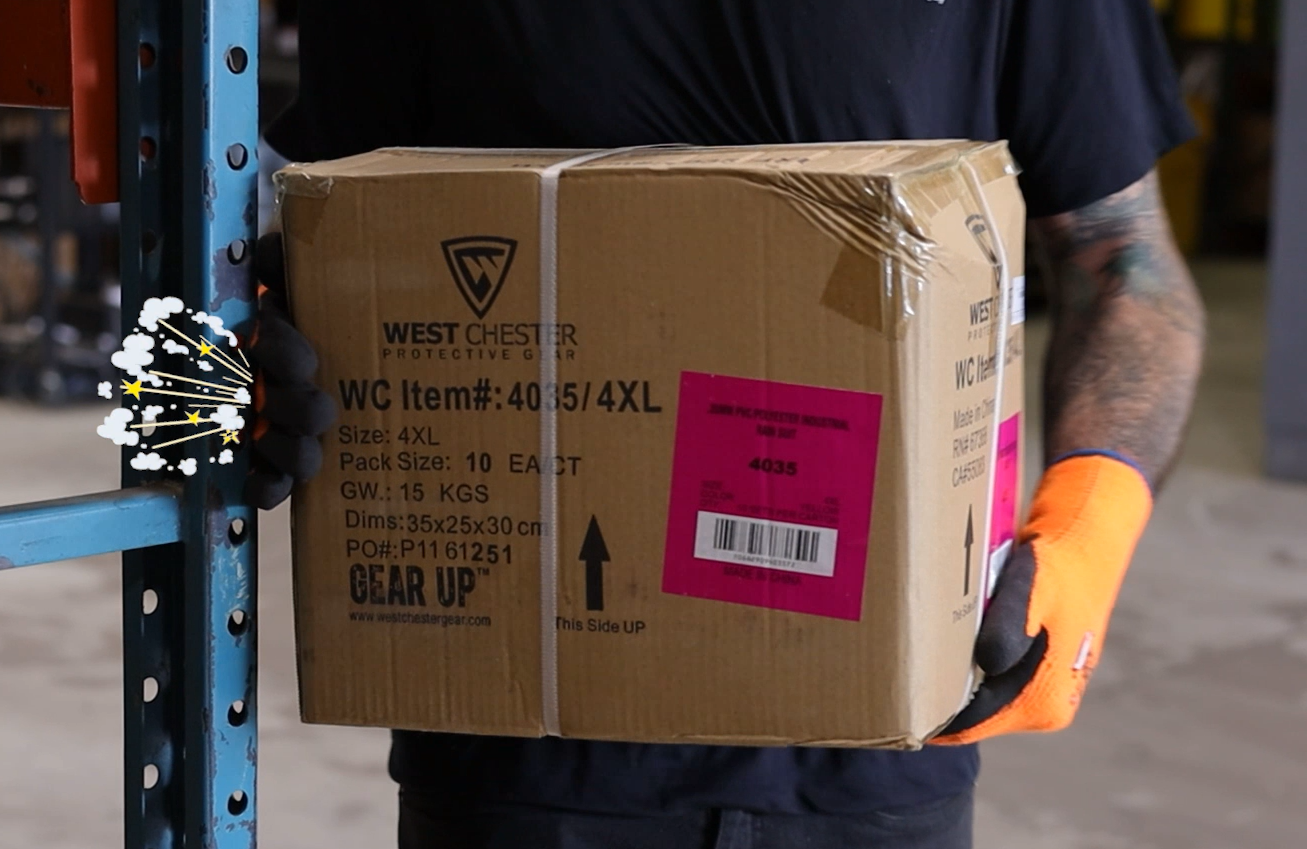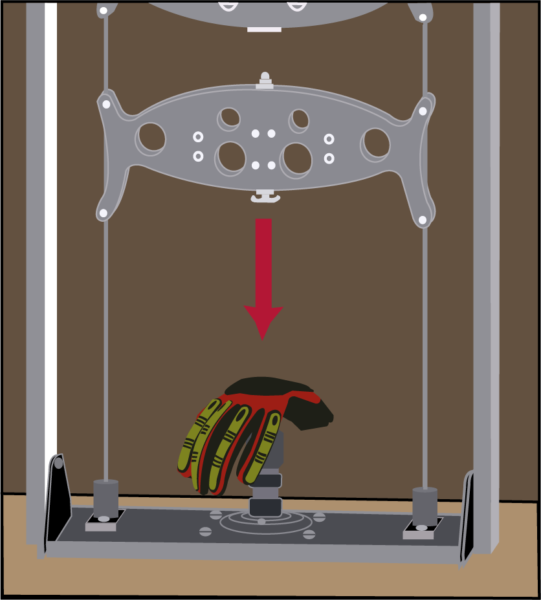
11 Mar Glove Risks: Impact
The ANSI impact rating is a more recent addition to the risks tested, and it is the only one specifically targeted to the back of the glove. This is the test that measures a glove’s ability to protect knuckles and fingers from inadvertent collisions with hammers and other unyielding objects.
The test is performed by cutting away the front of the glove to be able to measure just the effects of blows to the knuckles and fingers of the back of the hand. Nine separate areas including knuckles, fingers and thumbs are tested for their ability to withstand the shock of a heavy weight falling on them. The glove is draped over a fixture equipped to measure the force transmitted through the glove using a measuring unit called kilonewtons (kN). The more effective the protection, the lower the transmitted force.

Since the protection of the glove is only as strong as its weakest point, the test focuses on the poorest performing set of results out of the 9 areas that are measured. For the glove to achieve the rating of 1, 2, or 3, the lowest performing test area must achieve an average score no higher than specified kN, and none of the individual tests can show an outlier higher than the allowed maximum as shown in the table below.
| Performance Level | 1 | 2 | 3 |
| Mean peak transferred force (kN) | ≤ 9 | ≤ 6.5 | ≤ 4 |
| All impacts (highest permissible outlier in kN) | <11.3 | ≤8.1 | ≤5 |
Most gloves qualifying for even the lowest impact rating will be equipped with some kind of bumper material added to the back of the glove.
Watch a video version of this topic HERE.



No Comments